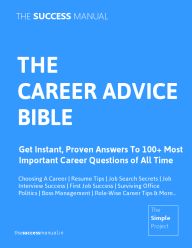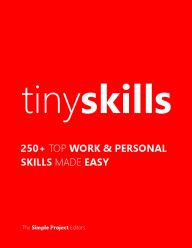On February 16, 2025 By thesuccessmanual Topic: Remarkable, Simpleguide
The point of this unique guide is to inform you about the importance of catching people's attention as soon as possible, in the best way you can.
This guide belongs to 100 Ways To Be Being Remarkable Series, a special project that brings you business and self-development advice from The Success Manual.
1. FIRST 100 DAYS RULE
An idea associated with leadership.
The Harvard Business Review associates the idea with “taking hold in a new position and mastering the challenges that face all (new) leaders in the first weeks and months of their tenure. "
It requires being a leader who knows when to talk, when to listen, when to get data, and when to give direction.
You should form a plan and act on it completely, meeting all your objectives.
Example:
- In a new job
- New CEO
- Your new startup
- A new venture – for example, first 100 days in Iraq.
- New school
2. THE "90-SECOND HONEYMOON"
AKA THE FIRST 90 SECONDS OF EVERY RELATIONSHIP
Most people only truly listen about 90 seconds before they make judgments about you. The 90-second "honeymoon" period is critical for making a favorable impression. Psychologists say that first impressions are based on our spontaneous assessment of status, clothes, sex, age, size and posture, speech and facial expression
How to Make A Good First Impression: In brief,
1. Dress to impress
2. Speak clearly: Introduce yourself clearly. Be specific when describing what services or products your company offers.
3. Organize your introduction
4. Use the person's name frequently: Experts suggest you use the person’s name at least three times during the conversation (beginning, middle and end)
5. Inform, do not sell.
6. Be yourself. Be welcoming, energetic, enthusiastic, curious, and resourceful.
7. Send the right signals - with your face, body and voice.
8. Use Eye Contact. Experts suggest you maintain uninterrupted eye contact for 3-5 seconds. It will not harm if you practice this if feeling uncomfortable at first.
8. Be a good listener.
9. Let the other person be the center of attention: Listen as if you really mean it. Nod often. Ask open-ended questions.
10. Follow up: Get his/her business card and send a personal note to follow up.
- Nicholas Boothman, How to make people like you in 90 seconds or less
3. THE FOUR SECOND RULE
The amount of time that user will wait for a page to load before leaving and going to another site
4. THE 90 SECOND RULE
When shoppers wait up to about a minute and a half, their sense of how much time has elapsed is fairly accurate. Anything over ninety or so seconds, however, and their sense of time distorts—if you ask how long they’ve been waiting, their honest answer can often be a very exaggerated one. If they’ve waited two minutes, they’ll say it’s been three or four. In the shopper’s mind, the waiting period goes from being a transitional phase in a larger enterprise (purchasing goods) to being a full-fledged activity of its own. That’s when time becomes very bad. Taking care of a customer in two minutes is a success; doing it in three minutes is a failure.
- Paco Underhill, Why We Buy
5. THE 90-SECOND DEMO
Do it all in 150 words.
Have a script ready.
20 seconds: defining the problem.
1. What’s wrong or broken?
2. How do people deal with this problem today?
60 seconds: main body
Step the audience through a story one click at a time. Show a screen. Explain what is being shown. And then describe what will happen next. Tell them where you plan to click or what action you’re going to take and then do it. Explain the result and then repeat, one action at a time.
If possible, build the story to a climax. Each step from click to click should get progressively more interesting.
Last 10 seconds: Crack a joke. Finally, close with some kind of contact information. Announce your name and the name of your demo during the applause, and leave before the applause finishes.
- Matt McAlister
6. THE 15 SECOND PITCH
A notion formulated by Laura Allen and Jim Convery that suggests that all of us should have a 15 second “story” to tell someone when they ask us “What do you do?”
THE 15-SECOND SALES PITCH
Seconds 1-5: Grab their attention with a powerful opening sentence
The ideal opening sentence contains 2 benefits of your product, as well as profiling the ideal customer.
Seconds 6-10: Feed their curiosity by expanding on the advantages and benefits
Advantages are what you get from owning or receiving the commodity. Benefits are what you get from the advantages. Ways it helps you.
Seconds 11-15: Call for action
Give them your business card. Direct them to your website. Offer them a free trial. You need to move them from "Ah, that's nice!" to "That could help me!" And once you've accomplished that, you need to make it easy for them to acquire your product or service.
- www.mypalpad.com
7. ELEVATOR PITCH
An elevator pitch (or elevator speech) is a brief overview of an idea for a product, service, or project. The pitch is so called because it can be delivered in the time span of an elevator ride (say, thirty seconds or 100-150 words).
The term is typically used in the context of an entrepreneur pitching an idea to a venture capitalist to receive funding. Venture capitalists often judge the quality of an idea and team on the basis of the quality of its elevator pitch, and will ask entrepreneurs for the elevator pitch so to quickly weed out bad ideas.
It is said that that many of the most important decisions made on the floor of the United States's House or Senate are made "within the span of an elevator ride" as a staff aide whispers into a Congressman or Senator's ear while they head down to the floor to cast their vote.
A variety of other people, including intrapreneurs, project managers, salespeople, evangelists and job seekers, commonly use elevator pitches to get their point across quickly.
- Wikipedia
Six questions your "Elevator Pitch" must answer:
1. What is your product or service?
2. Who is your market?
3. What is your revenue model?
4. Who is behind the company?
5. Who is your competition?
6. What is your competitive advantage
What your "Elevator Pitch" must contain:
1. A "hook": A statement or question that piques their interest to want to hear more.
2. About 150-225 words: Your pitch should go no longer than 60 seconds.
3. Passion: Investors expect energy and dedication from entrepreneurs.
4. Request: At the end of your pitch, you must ask for something. Do you want their business card, to schedule a full presentation, to ask for a referral
- Seekingcapital.com
8. THIRTY SECOND ELEVATOR PITCH
Helpful for professionals and job seekers.
It is the basic introduction of who you are and what you are looking for. It will form the basis of your introductory message when networking, your opening statement in telephone contacts with employers, and the foundation of your "Tell me about yourself" answer in interviewing.
- Collegegrad.com
9. FIRST 180 CHARACTERS RULE
Used in the Search Engine Optimization – trying to get a web page listed higher in search engine results. To do that, internet experts suggest that the first 180 or so characters of any web page must contain all the necessary information about the page, including relevant keywords.
Reason: Most search engines show around 160 characters (or about) about an URL in their search result pages.
If you liked this article, please bookmark it on Delicious or share on Twitter. Thanks, friends. Follow us on Twitter. | Get Updates To This Blog Via RSS
We don't recommend any other guide than our very own The Success Manual - Encyclopedia of advice to 130 most important skills.

